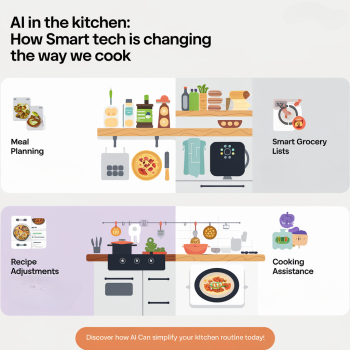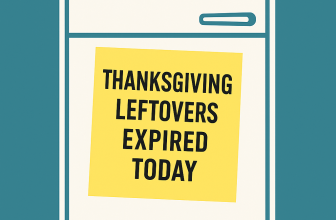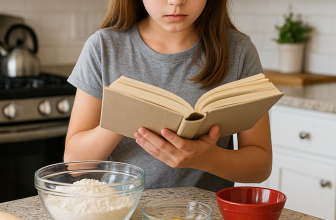In a previous post, I talked about how having smart WiFi and Bluetooth-enabled gadgets and appliances in your kitchen can greatly help with time, efficiency, and precision. But this time around we are getting geeky (and super smart) using Artificial Intelligence.
Do me a favor and download ChatGPT immediately!! It’s free. And it works great on your mobile devices. Or use one of the many other AI-power assistants out there. Your choice. Either way, you’ll thank me (and the bots) later. Maybe not when they take over the world, but definitely when you need ideas for leftovers.
But there's so much more. AI is transforming the home kitchen by making meal planning, grocery shopping, and cooking easier, more efficient, and budget-friendly. Whether you're looking to save time, cut down on food waste, get more creative with your meals, or have specific dietary needs, AI-powered tools can help.
I previously stated that I am low-tech in the kitchen. But that isn’t exactly true. I use AI for my grocery shopping lists and to figure out what to make with whatever happens to be in my fridge or pantry. I think I forgot about using AI because it’s become such an integral part of my life – in and out of the kitchen.
And you don’t need to be a techie to get started right now with AI. With many of these AI apps, you can type in your request or simply speak directly into your phone or tablet. Some even let you use photos as part of the process. We’ve included some sample prompts to help you get the ball rolling.
Smart Meal Planning & Recipe Recommendations
How AI Helps:
- AI-powered meal planners analyze your dietary preferences, available ingredients, and schedule to create personalized meal plans. You can even take a photo of what’s in your fridge and ask AI to make a recipe from the ingredients.
- Can suggest meals based on nutrition goals, food allergies, the number of people in your household, or budget constraints.
- Prevents decision fatigue (or paralysis) and reduces food waste by maximizing ingredient usage.
Benefits: Saves time, ensures variety, minimizes food waste, and supports health goals.
Example Prompts:
- “Create a 7-day meal plan for a family of four using budget-friendly, high-protein ingredients.”
- “Suggest a meal plan using only the ingredients I have: chicken breast, bell peppers, quinoa, black beans, and feta cheese.”
- “Generate five easy, 30-minute dinner recipes for a vegetarian diet with a weekly grocery budget of $75”
AI-Generated Grocery Lists & Smart Shopping
How AI Helps:
- Creates automated shopping lists based on your meal plan or recurring needs.
- Can integrate with smart refrigerators to detect when food is running low and add it to your list.
- Finds cost-effective alternatives and compares prices at different stores in your area.
Benefits: Saves money, prevents impulse purchases, and reduces food waste.
Example Prompts:
- “Create a grocery list for the next five days based on these meals: spaghetti bolognese, grilled salmon with quinoa, stir-fry chicken, and vegetable soup.”
- “Find the cheapest grocery store in my area for this shopping list: eggs, milk, chicken thighs, spinach, rice, and olive oil.”
- “Suggest budget-friendly ingredient swaps for salmon, avocado, and almond flour.”
AI-Powered Recipe Adjustments & Substitutions
How AI Helps:
- Adjusts recipes based on serving sizes, dietary restrictions, or missing ingredients.
- Provides allergy-friendly swaps (for example: nut-free, dairy-free, gluten-free).
- Can offer healthy modifications such as reducing sugar or using less oil.
Benefits: Avoids last-minute grocery runs, supports dietary needs and promotes healthier cooking.
Example Prompts:
- “Adjust this recipe for 2 people instead of 6: [insert recipe].”
- “Suggest a dairy-free alternative for heavy cream in pasta sauce.”
- “Modify this cookie recipe to be low-sugar but still taste great.”
AI for Cooking Instructions & Guided Assistance
How AI Helps:
- Provides step-by-step cooking instructions tailored to your skill level.
- Can convert units (grams to cups) and adjust cook times for different appliances.
- Smart kitchen assistants can offer real-time cooking help via voice commands.
Benefits: Reduces kitchen stress, improves cooking skills, and prevents common mistakes.
Example Prompts:
- “Walk me through cooking a medium-rare steak step by step.”
- “Convert this bread recipe from metric to U.S. measurements: [insert recipe].”
- “What’s the best way to crisp up roasted potatoes in an air fryer?”
AI for Reducing Food Waste
How AI Helps:
- Suggests recipes based on soon-to-expire ingredients.
- Tracks pantry items and alerts you before expiration dates.
- Can recommend proper storage techniques to extend food shelf life.
Benefits: Saves money, reduces waste, and makes the most of what you already have.
Example Prompts:
- “What can I make with carrots, eggs, and feta cheese before they go bad?”
- “How should I store fresh herbs to make them last longer?”
- “Give me three creative ways to use up leftover roasted chicken.”
AI for Nutrition Tracking & Meal Optimization
How AI Helps:
- Analyzes recipes and provides calorie counts and macronutrient breakdowns.
- Suggests healthier alternatives while keeping the flavors intact.
- Helps plan balanced meals for weight loss, muscle gain, or specific health conditions.
Benefits: Supports health goals, ensures balanced meals, aids in mindful eating.
Example Prompts:
- “Calculate the calories and macronutrients in this recipe: [insert recipe].”
- “Suggest a lower-calorie alternative to deep-fried chicken that still tastes crispy.”
- “Build a high-protein, low-carb meal plan for weight loss.”
AI for Smart Kitchen Appliance Integration
How AI Helps:
- Connects with smart ovens, air fryers, and instant pots for automated cooking.
- Provides real-time temperature monitoring via smart thermometers.
- Suggests optimal cook times based on food type and weight.
Benefits: Ensures precision cooking, prevents overcooking and enhances convenience.
Example Prompts:
- “How long should I cook a 2-inch thick steak in my sous vide at 130°F?”
- “Set my air fryer to 375°F for 15 minutes to roast Brussels sprouts.”
- “What’s the best temperature and time to bake salmon for a flaky texture?”
AI for Beverage Pairings & Cocktail Recommendations
How AI Helps:
- Suggests wine, beer, or cocktail pairings for your meals.
- Provides custom cocktail recipes based on available ingredients.
- Helps adjust the brew strength and temperatures for coffee and tea.
Benefits: Enhances dining experience, saves money by using what you have, expands beverage knowledge, and helps with planning a celebratory dinner gathering.
Example Prompts:
- “What wine pairs best with a spicy Thai curry?”
- “Create a cocktail using gin, lime, and honey.”
- “What’s the ideal temperature for brewing oolong tea?”
- “What’s a good signature cocktail that I can make for a group of 10 based on these liquors I have?”
Pro Tip: When writing AI prompts you can instruct it to “act” as something (a chef, a bargain hunter, a recipe expert, etc.) and then give it very specific directions. Be sure to tell it how you want the output presented (as a list, as a recipe, or in a chart with daily meals). You can also say what you don’t want (no metric measurements, nothing with specific ingredients, no air fryer recipes). Using examples helps deliver better results (I love dishes that are egg forward like quiche or frittatas). You will be able to build on previous prompts as well as correct mistakes and provide feedback.
The bottom line is that AI isn’t just for tech lovers. It’s a game-changer for home cooks of all levels. Whether you want to simplify meal prep, cut down on grocery bills, or perfect your recipes, AI can save time, reduce stress, and help you cook smarter.








